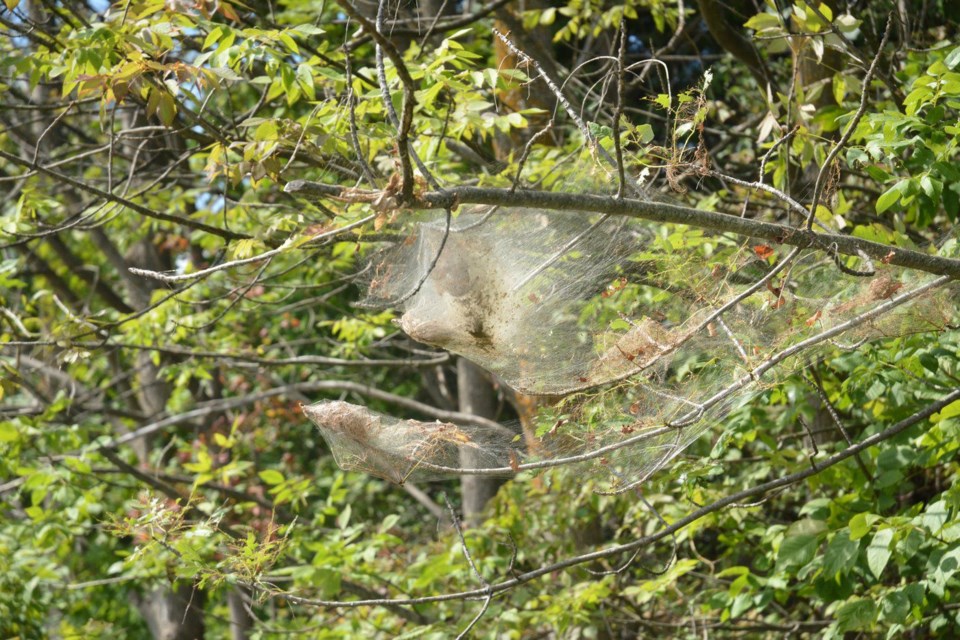After this summer’s invasion of gypsy moths, or LDD moths as they are now known, local property owners can now look forward to having their trees covered in web-like material as Fall Webworms take over the branches.
The good news is Fall Webworms do not have the destructive ability that arrived with the gypsy moths.
While many homeowners went to great lengths to stop the gypsy moths from destroying their trees, there’s not much you can do or have to do, to stop Fall Webworms.
Because these creatures arrive late in the growing season, they do little damage to trees.
The Webworms will create their nests on almost any kind of hardwood tree in the late summer and early fall. It is considered a pest but does not harm otherwise healthy trees.
At worst it is an unsightly mess depending on how bad the infestation becomes.
While many destructive species, like the gypsy moth, were brought here as an invasive species, the Fall Webworm is native to North America, and actually spread into Europe and parts of Asia.
These worms have only one generation per year in Canada. It overwinters in the pupal stage in cocoons then transforms into an adult in the spring.
The female deposits her eggs on the underside of leaves and covers them with white hairs from her abdomen.
The fall webworm is easily detected by the presence of numerous silk webs on crown branches in summer.
The larvae, which feed on foliage throughout their development, secrete silk which they spin into small webs.
As they grow, they enlarge the webs, which can sometimes enclose the entire tree. They are able to create webs on many different types of host plants.
They are able to create webs at many different elevations and of many different shapes, and they spread very quickly.
Once you have them in your trees, there’s very little you can do to control them. If they are in a place that is causing problems, like overhead of a recreational area, you can try to eliminate them early by cutting the branches and burning them.
Brian Lockhart, Local Journalism Initiative Reporter, New Tecumseth Times



